Selecting the Perfect Ski

Many times, guests are concerned about finding the “perfect” ski, which is sometimes referred to as the “utility knife” or the “one ski quiver.” Skiers dream of the ski that will do everything for them and be exceptional in every condition and slope. Does that even exist? Many will say that you don’t select skis but the perfect skis will choose you!
What is the perfect ski?
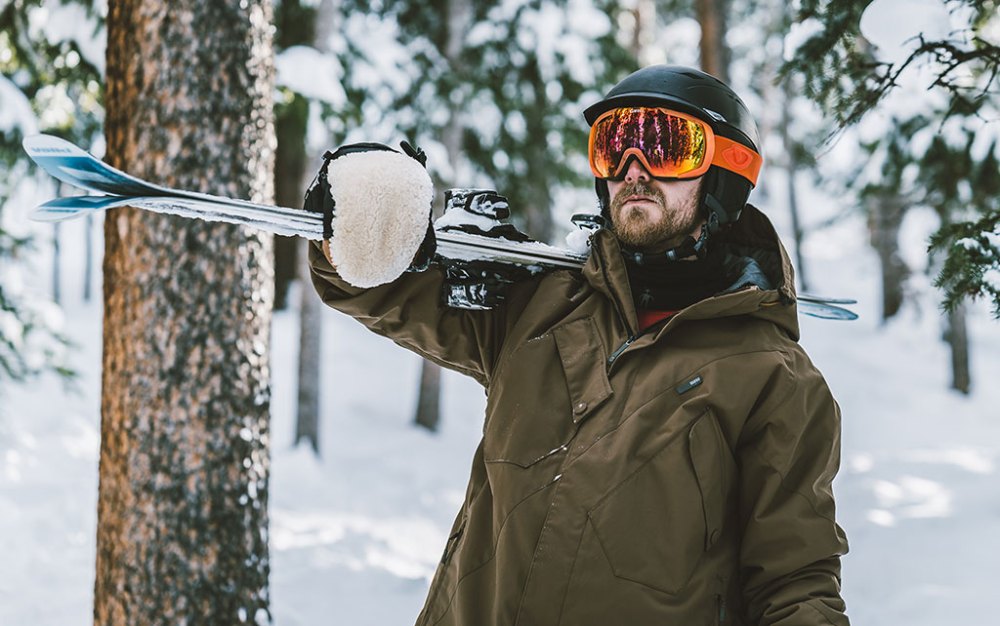
I like to use the analogy that skis are like cars. So, I will ask the question, What is the perfect car?
It depends on the individual.
I think the perfect car is the Ferrari F40. I would have it in classic red with brown interior. It’s super-fast and sporty but on the high end of luxury as well. Maybe you can guess what kind of skis I like.
For the mom with five kids, this is not the perfect car for her. She needs something functional and easy to use. She needs a reliable vehicle with good gas mileage that is easy to load and unload and can haul seven people, car seats, and luggage. Her needs are far different from the Ferrari guy.
The perfect ski depends on the individual’s needs.
Some Suggestions to Simplify the Ski Selection Process
I always ask two questions to help the process along.
#1 – Where on the mountain do you prefer to ski?
#2 – How fast do you typically ski?
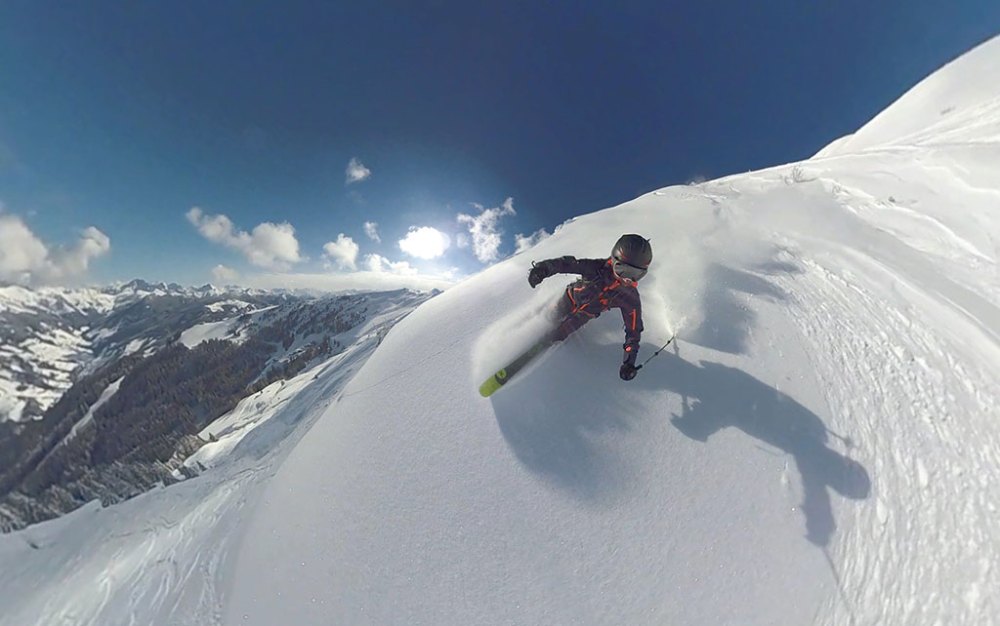
By asking these two questions, you can assume a bunch of other variables.
Base Package
If you ski at the base or bottom of the mountain, I can assume that you like to ski slower on more mild terrain. You might be skiing with kids or as a family, or you are a novice/inexperienced skier. You enjoy green runs and even like trying some easy blues as your day progresses. You like skiing the same runs, same slope or pitch, and are working on getting better or advancing your ability. You want something soft and easy to flex, which in turn makes the ski easy to ski.
If you have skied less than ten days in your skiing career and like a controlled environment, this might describe you. You want a ski that is easy to ski and is light and predictable. This usually refers to less than 10% of the skiing population. If this matches your ability and preference, then our “Base Package” is for you.
Mountain Package
If you like to ski the entire mountain I can assume that you are an intermediate to advanced skier. You like to cruise and enjoy milder terrain at higher speeds, but you also like steeper, more challenging terrain and testing your ability. You want the Suburban of skis. That is, you want one that will go anywhere and do anything.
This would be considered an “All Mountain” ski. It’s not fantastic at just one thing, rather it does a variety of things well. You typically enjoy cruising and seeing the entire mountain. Your day is more about spending time with your family and friends and enjoying vista views. The lunch dining option is just as important as the skiing.
This package would describe 70% of skiers on the hill. These lifts are typically the busiest that service this type of terrain. If what I’ve just told you describes your day of skiing, then the “Mountain Package” is where you live. You can’t go wrong with our most booked package.
Summit Package
If you ski at the top of the mountain or the summit, I can assume that you are an expert or advanced skier. You tend to ski faster and like more challenging terrain. You have more experience, and you want stiffer skis that will handle high speeds.
You also like skis that will handle a lot of different conditions, like firm or hard-packed snow and the deep, soft stuff. You are typically looking to find the goods that no one else has found. You also will scout the trail map before you arrive and have your assault on the mountain clearly marked and planned. You like to see how quickly you can make it to the top with the least number of lifts.
You are typically the first one to arrive and the last one to leave. The altimeter logs your vert, and you want the most of your day. Lunch most days consists of an energy bar and then Après (drinks and appetizers at the bar after skiing). If this describes you, we have a wide range of skis in our “Summit Package” to accomplish what you are looking for.
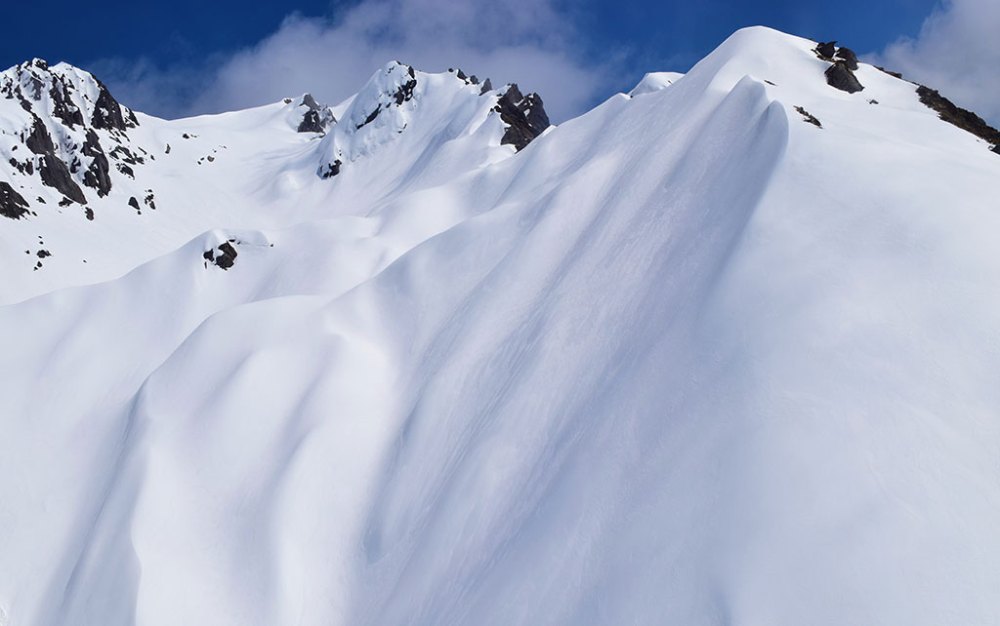
If you drive a G-wagon, Range Rover or Porsche and you appreciate the finest luxury then look no further than our “Elite Package”. These are the most expensive skis, made from the finest materials. These types of skis aren’t really about where you ski on the mountain but what mountains you favor. It’s more about the experience while skiing, not the number of runs. You are more concerned with making memories than laps or “quality, not quantity.” You might consider yourself a ski snob and only ski the best days with the best conditions. I don’t even need to describe you, because quite frankly…well….you know who you are.
Think of your skis like buying a car. What do you really need a car to do, or in this case, the ski? What are things you consider? Price? Performance? Terrain? Who will be driving most of the time? You can see, whether it’s a car or skis, there are loads of similarities. But this is just the tip of the iceberg.
Elite Package
If you drive a G-wagon, Range Rover or Porsche and you appreciate the finest luxuries, then look no further than our “Elite Package.” These are the most expensive skis, made from the finest materials. These skis aren’t really about where you ski on the mountain but what mountains you favor.
It’s more about the experience while skiing, not the number of runs. You are more concerned with making memories than laps or “quality, not quantity.” You might consider yourself a ski snob and only ski the best days with the best conditions. I don’t even need to describe you, because quite frankly … well … you know who you are.
Think of your skis like buying a car. What do you need a car to do, or in this case, the ski? What are things you consider? Price? Performance? Terrain? Who will be driving most of the time? You can see, whether it’s a car or skis, there are loads of similarities. But this is just the tip of the iceberg.
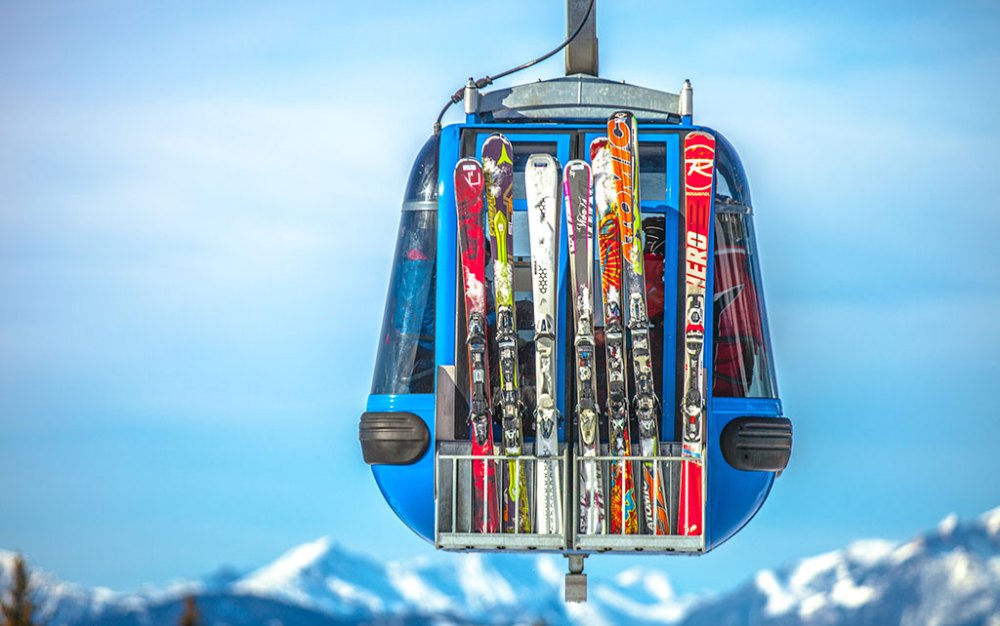
Now that you have identified where on the mountain you like to ski and how fast you typically ski, let’s talk about how that translates to the perfect ski for you.
Two significant factors are easy to identify when choosing a ski: waist width and construction.
Waist Width

When we talk about waist width, what do we mean? This refers to the middle section of the ski and is typically the narrowest point on any shape ski.
Try not to overthink it; it’s super simple. Narrow skis are great on hardpack snow, and wide skis are great in soft snow. We would all love to ski super-soft, deep powder every day. We know that’s not always the case. Even when the deep days come, the powder gets skied off, and you need something that will get you back to the parking lot at the end of the day.
Most skiers don’t benefit from owning several pairs of skis, or if they do, it becomes burdensome to travel with several sets. Narrow, hard-packed and machine-groomed skis made to carve or race down the mountain are in the 66-75mm range. Skis will even go as comprehensive as 130mm and up for the really deep powder days.
Here in Utah, a typical Powder ski will measure 100-115mm underfoot and will ski well in soft snow. Great All-Mountain skis are in the 80-95mm flavor. If you think about where you like to ski on the mountain and that area’s typical conditions, you should be able to get an excellent idea of the waist width ski you should be choosing.
You’ll also want to think about the area specific to your skiing location and its snow conditions.
East Coast skiing, like Killington and Loon Mountain, ski narrow hardpack skis that are made for substantial snow. You typically don’t see anything on the mountain wider than 85mm. That would be considered a powder ski for that area.
West Coast skiers typically ski much wider skis that perform better in wet or heavy, creamy snow. It’s not unusual to see skiers ripping on 120mm skis. The go-to All Mountain width is 85-95mm if you are skiing Park City and Deer Valley. If you ski the Cottonwood resorts like Alta, Snowbird, Brighton and Solitude, the standard widths are 100-110mm.
Construction
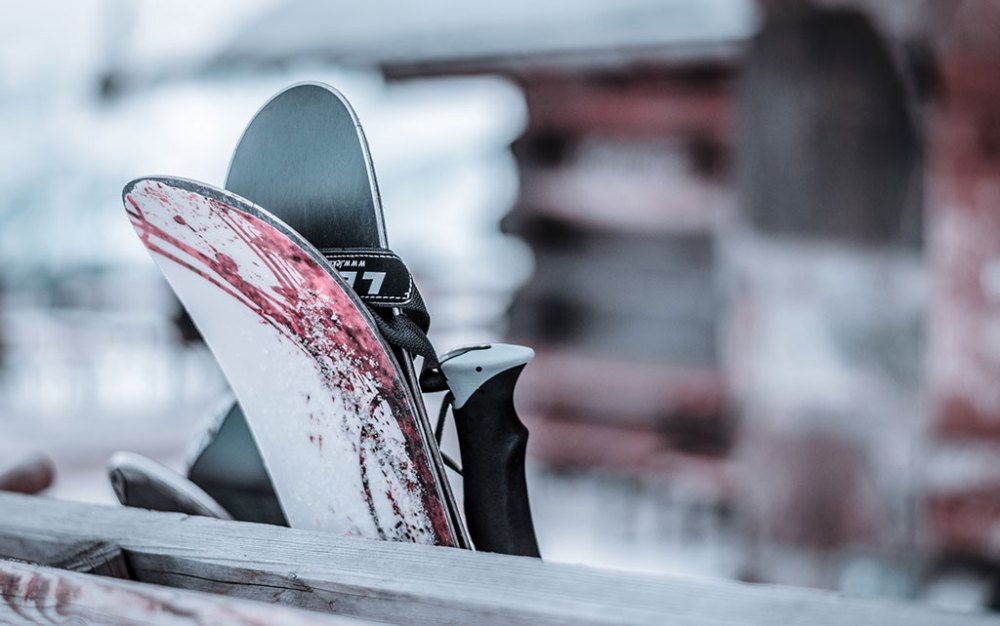
The next thing to consider is construction, or what materials are used and specifically how those materials are put together. Let’s start with core construction. There are three primary cores used in building skis: foam, wood and metal. There are many more than this, but for this post, I want to keep it simple.
Foam
It’s inexpensive. It’s light. It can be very predictable and consistent. The downside is that it breaks down quickly and is soft. It also doesn’t absorb vibration or energy. Generally, foam core skis are very cheap and inexpensive.
They are straightforward to make and are sometimes referred to as a squirt ski. You have a cap top sheet, a base material on the bottom, an inside with foam and then you are all set up. Not surprisingly, the only skis that use this construction are beginner and junior skis.
The plus side is they are soft flexing and effortless to turn at slow speeds. As you get going faster, they can get pretty terrible.
Wood
Most of the skis on the market today have some sort of milled wood core in the center of the ski. Wood doesn’t break down as quickly as foam, retains its shape, and when it’s flexed, springs back to its original shape. Wood also provides energy to the ski.
When a ski is flexed and then returns to its natural shape, it gives you energy on the snow or what is referred to as rebound. This makes it easier to get into the next turn and feels pretty good on the snow.
Wood core skis are Mid-Range or All-Mountain skis. Not too fast and not too expensive. Most intermediate All-Mountain skis are wood core skis.
Metal
Any ski that would be considered top-tier or advanced-type skis will contain metal in the ski’s core. Sometimes they will contain just one sheet, just under the binding or in the mounting plate of the ski. Sometimes they will even contain two or three sheets of metal.
Here’s the science: it isn’t about how much metal or even the metal’s type or thickness. It is all about how the wood and layers of metal are put together. This is called sandwich construction. In fact, a sandwich construction, or vertical sidewall, is the same construction they use in the very highest level of skis in the World Cup.
It looks just like it sounds.
Think of making a sandwich. Layers of bread, meat, cheese, lettuce, tomato, mayo or whatever you like. These skis are made up of several layers of material. The core would be wood and metal, just like meat and cheese. When the layers are flexed, there is what is called shear between the layers. This is really what makes the skis lively and damp feeling.
Skis made in a sandwich construction are for advanced and expert skiers who like to ski fast because they are super smooth and stable at high speeds. They also create tons of energy when a ski is taken off the edge and released out of turn. It’s pretty exhilarating when you can flex and bend a ski at high speeds while skiing down the mountain.
Sometimes skiers will feel like they are literally flying. The downside is that these skis are heavier. If you tend to ski slow, you will struggle to turn a heavier, stiffer ski. You won’t enjoy skiing in them until you get them up to speed.
It’s challenging trying to learn proper technique on a stiffer, more advanced ski. This is why when you go into a ski shop, experienced skiers like to pick up the skis and flex them. They can feel how stiff or soft a ski is. They can imagine themselves skiing and flexing the ski in and out of turns, and how the ski will rebound and react while skiing down the mountain.
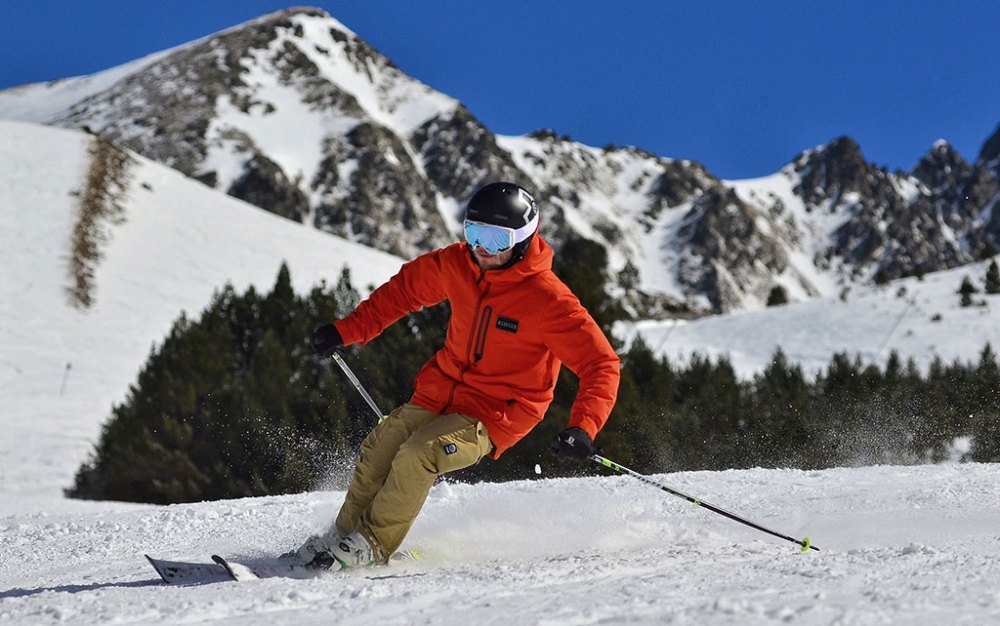
The perfect ski for you and the perfect ski for me could differ dramatically, or they might be pretty similar. Starting with these two simple factors, you should be able to narrow it down to have an intelligent conversation with someone at the ski shop about the type of ski you like to ski.
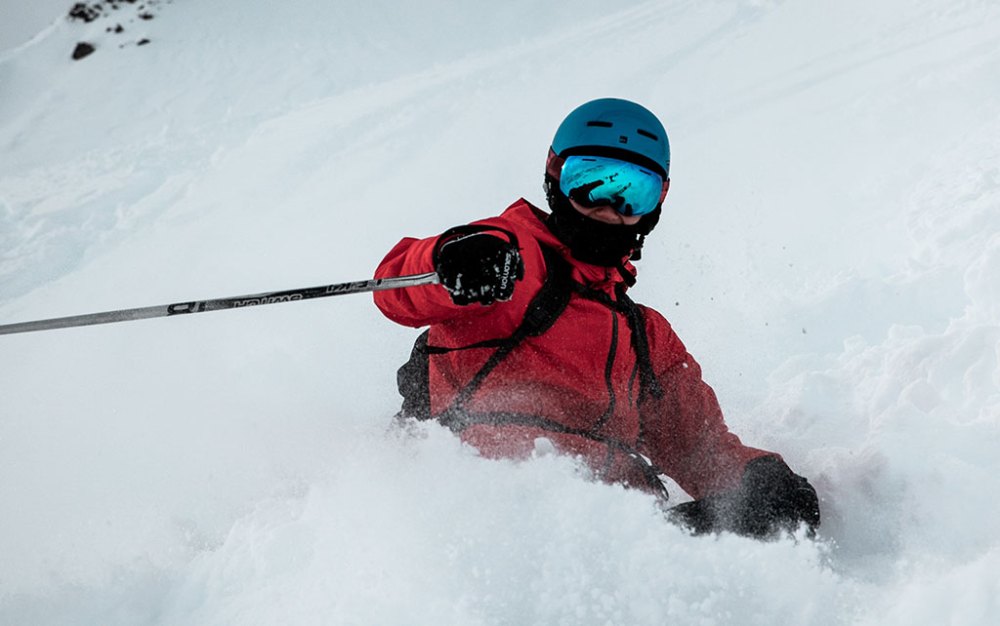
Ski sizing is always a catch 22. Some skis are made to ski longer, and some ski better short. Let’s break ski sizing down into generalities so it’s easy to understand.
Ski lengths are measured in centimeters. The most common ski size for men is 170cm, and the most common for women is 150cm.
Ski Sizing for Men

The average U.S. male is 5’9” or 176cm.
Most males who purchase skis are intermediate to advanced skiers. That makes sense because a 170cm ski will hit the average male right about eye level.
This is a good rule or starting point. Are you average in height and skiing ability? Just think about it. If you are taller than average, move up one size. If you are a better-than-average skier, move up one size.
If I am describing you, then you are skiing a mid-180’s ski. If you are shorter than average and a beginner skier, you should be in the mid 150’s range.
Ski Sizing for Women
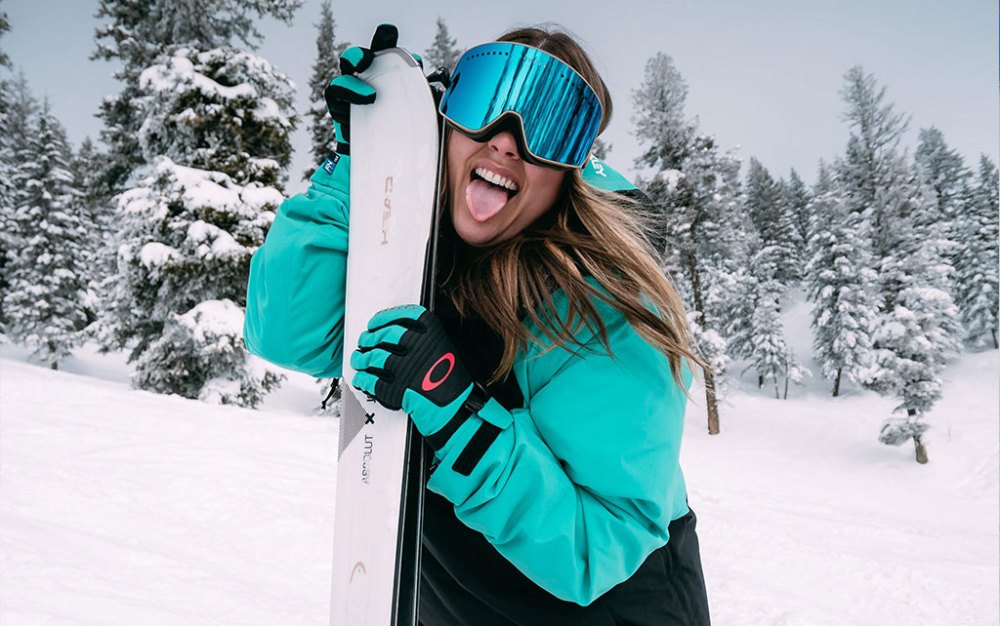
The average woman in the U.S. is 5’4” or 162 cm. Most females who purchase skis are intermediate skiers. Usually, they like a little softer ski that is easy to turn and control. The average 150cm ski would measure between the chin and nose for most women.
Same as males, if you are taller than the average woman, go up a ski size and if you are shorter, then drop down a size.
If you are an average to intermediate skier, stay at the 150cm length, or go up a size if you are an advanced skier.
If you are a beginner or like more control than speed, then drop down a size.
Here’s an example to consider: My wife is taller than average but an average skier. She would ski a 155-160cm ski, something in an All-Mountain ski without metal. She loves to be in control and never pushes the envelope at speed. She skis well and can ski most skis comfortably. A stiffer or metalcore ski is not the correct answer for her. She would never benefit from the metal core as it would only prohibit her from easy turning, and it would feel cumbersome at slower speeds.
Some might ask, “Should I ski a Women’s or Men’s ski?” If you are a woman who skis more aggressively and are taller than the average woman, then you may want to consider a Men’s ski. The opposite is also true.
Guys, if you are shorter than average, you ski slow and prefer a lot of control, then it wouldn’t be wrong to try a smaller, lighter women’s ski. It may have the label “Black Pearl” instead of “Sender Ti,” but it may work better for your skiing style.
We certainly don’t want to pigeonhole anyone and put them on a ski that is inappropriate for their height or weight just because of their gender. Ski what is suitable for your ability, speed, size and weight.
Time to Hit the Slopes
So there you have it. You should be armed with enough info to be dangerous! To wrap up, these are a few of my favorite skis:
On Piste Skis – Head iRally – 170cm and Stockli Laser AX – 175cm
All Mountain Skis – Stockli Stormrider 95 – 185cm, Kastle MX 88 – 180cm, and DPS Pagoda Piste 94 – 185cm
Everyday Utah/Jackson Hole Ski – Nordica Enforcer 104 Free – 186cm
Deep Day Skis – Nordica Enforcer 115 Free – 191cm
Touring/Backcountry Set-up – DPS Pagoda Tour 106 – 185cm
Note: I am male, 5’7”, 150lbs and an expert skier. I can ski any condition, any terrain, and I prefer skiing very fast and pushing the limits. You will notice that the ski sizes I like range between 170cm and 193cm. On different skis and conditions, I will typically ski a variety of skis, each made for a specific purpose and therefore all different lengths.

